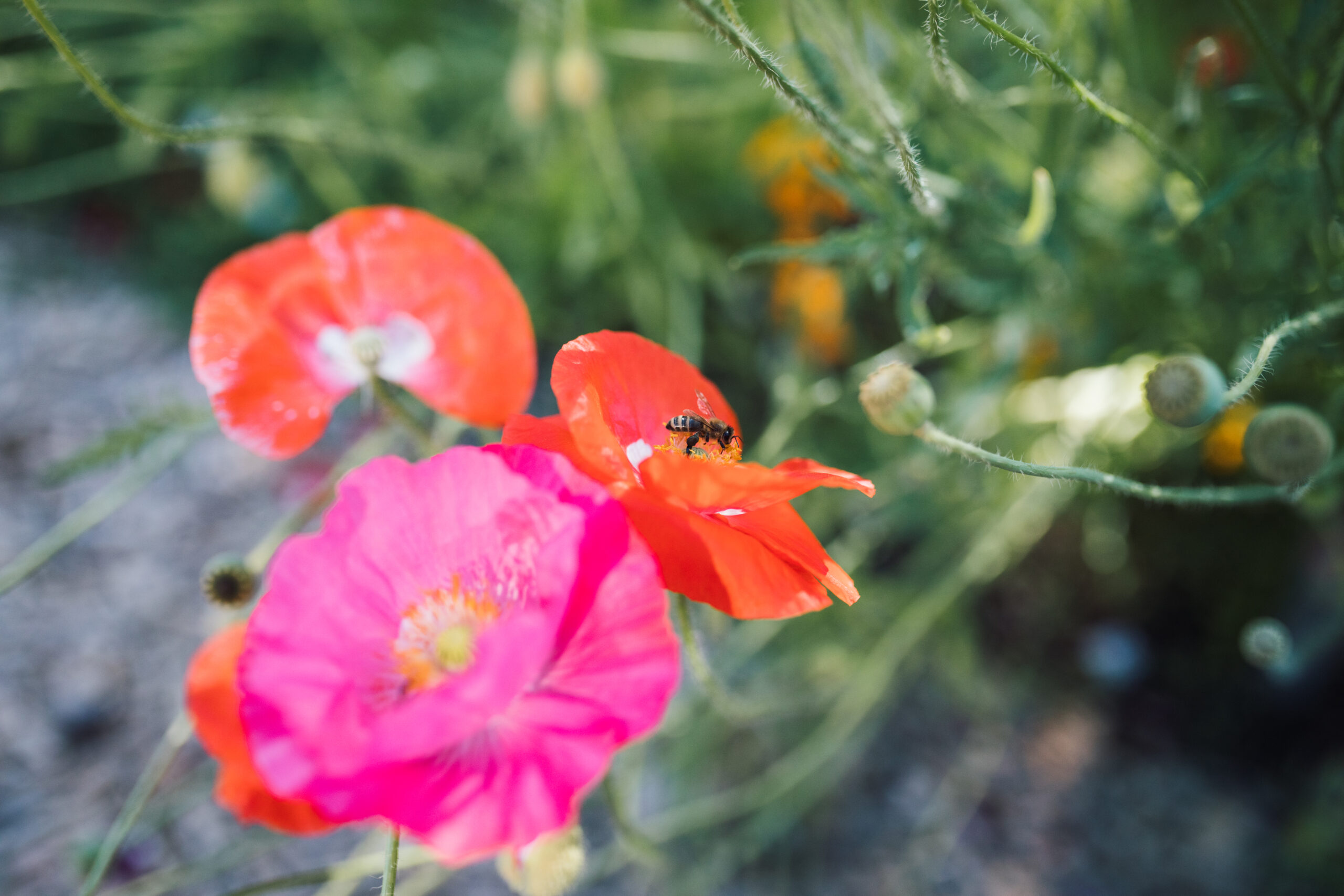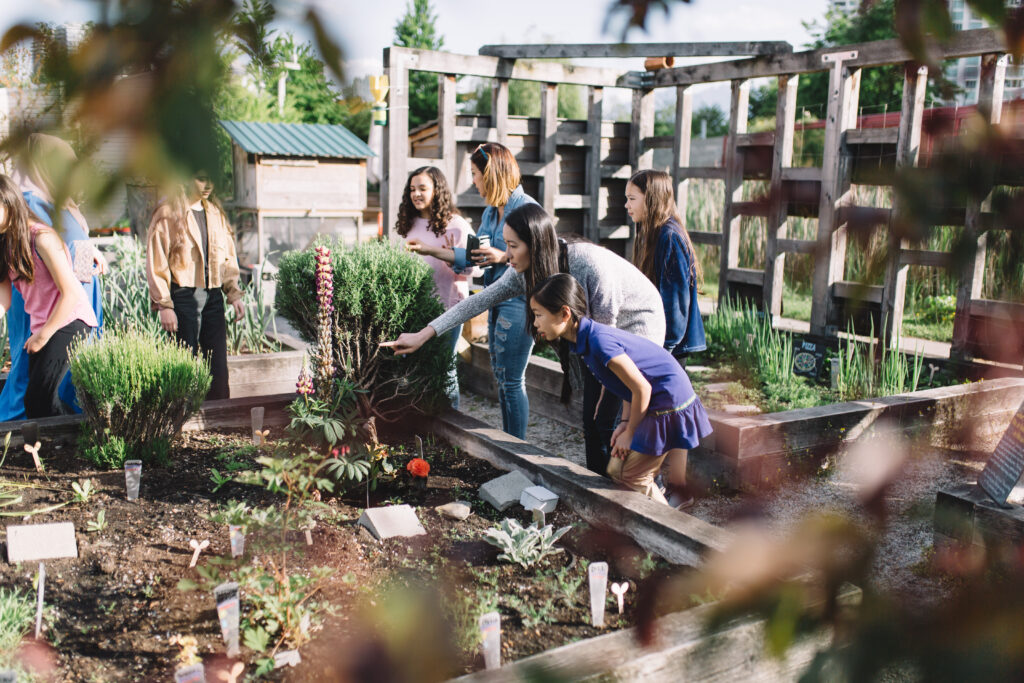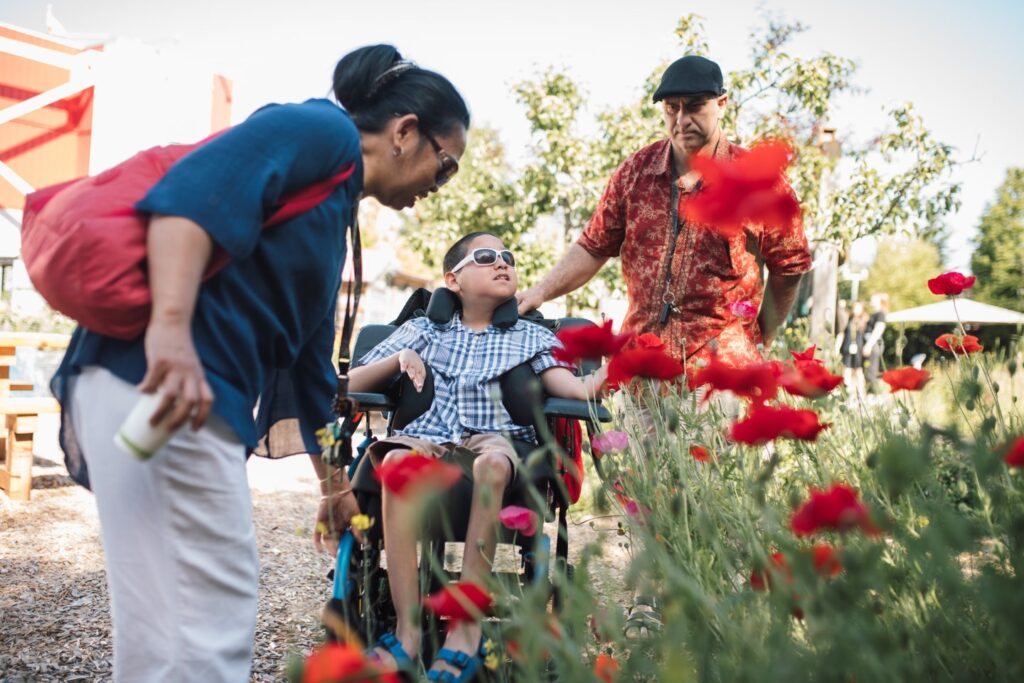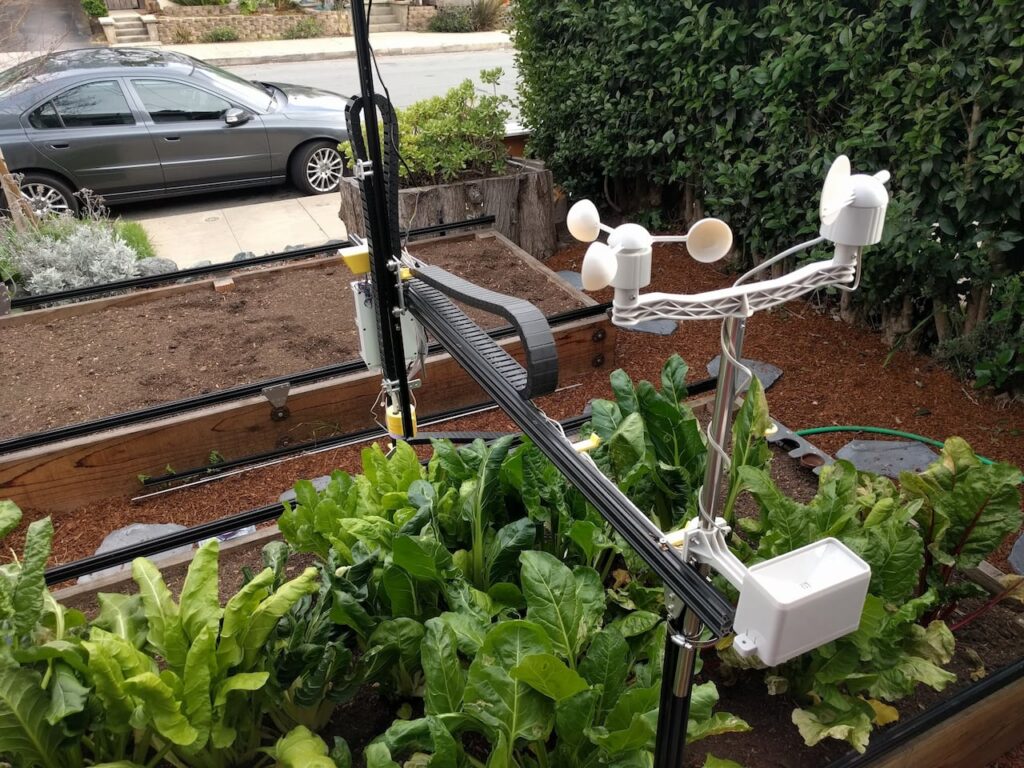“One of the big conversations around climate change and gardening is about watering,” Sarah says.
In Metro Vancouver, the average per capita water usage is 399 litres per day.
“Most of that is on lawn care,” Sarah says. “Which is why, as part of regional water conservation initiatives, automated sprinkler systems are often regulated, whereas hand-watering isn’t. You can hand-water your vegetable garden at any time.”
In Ken Spencer Science Park, eco-friendly rain barrels attached to the chicken coop and garden shed collect water for hand-watering.
Both buildings have green roofs, which reduce flooding and stormwater runoff by absorbing water in the soil and releasing it slowly.
But these green roofs don’t always capture all the rain. So, during heavy rainfall, excess water drains into rain barrels where it is stored for later use.
This water isn’t potable; we couldn’t drink it. But plants can. Sarah and her team—and the occasional Park visitor—use it to hand-water the gardens during dry spells.
“Between all three barrels in the Park, we capture and store enough water to last about half a month,” she says. “It can get us through periods of extreme drought.”
Solutions that Hold Water
This year, other water-saving initiatives in the Park include microbit moisture sensors in the soil, which track water content to help ensure garden beds aren’t over or under-watered; a drought-resistant plant bed that will demonstrate an experimental method of farming developed by Oregon State University called Dry Farming; and a FarmBot, a Computer Numerical Control (CNC) machine that automates things like watering—and can even do a bit of weeding.




